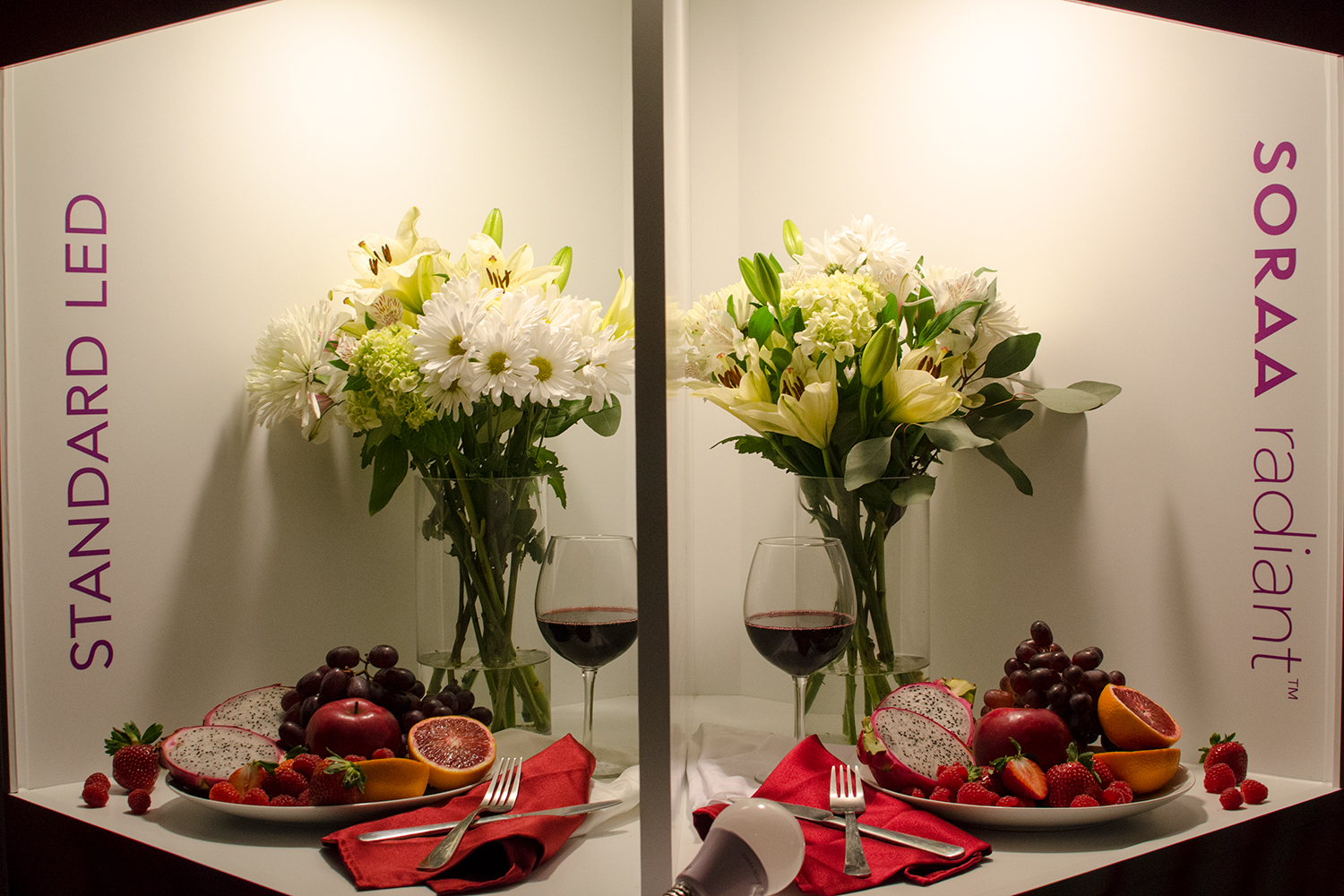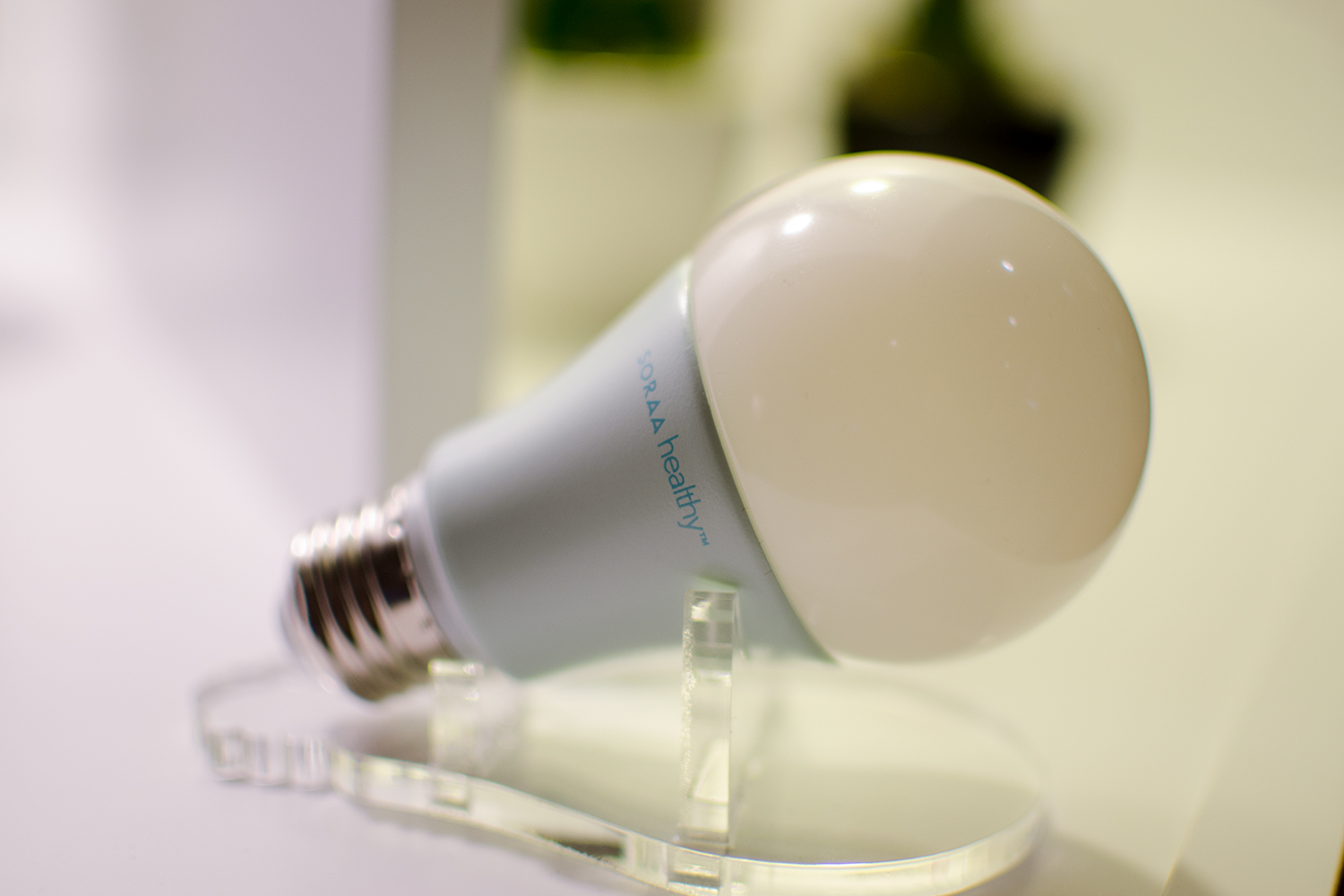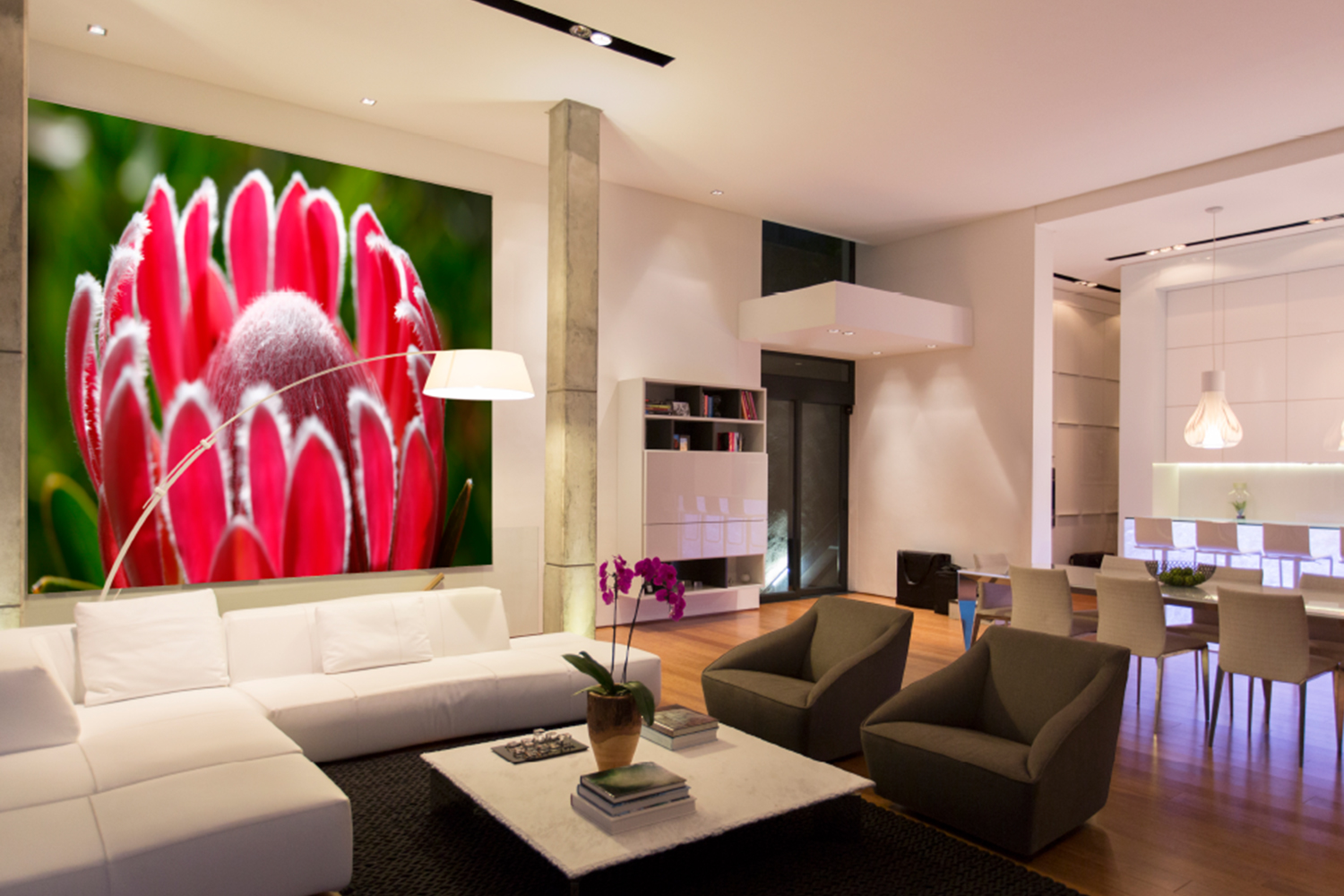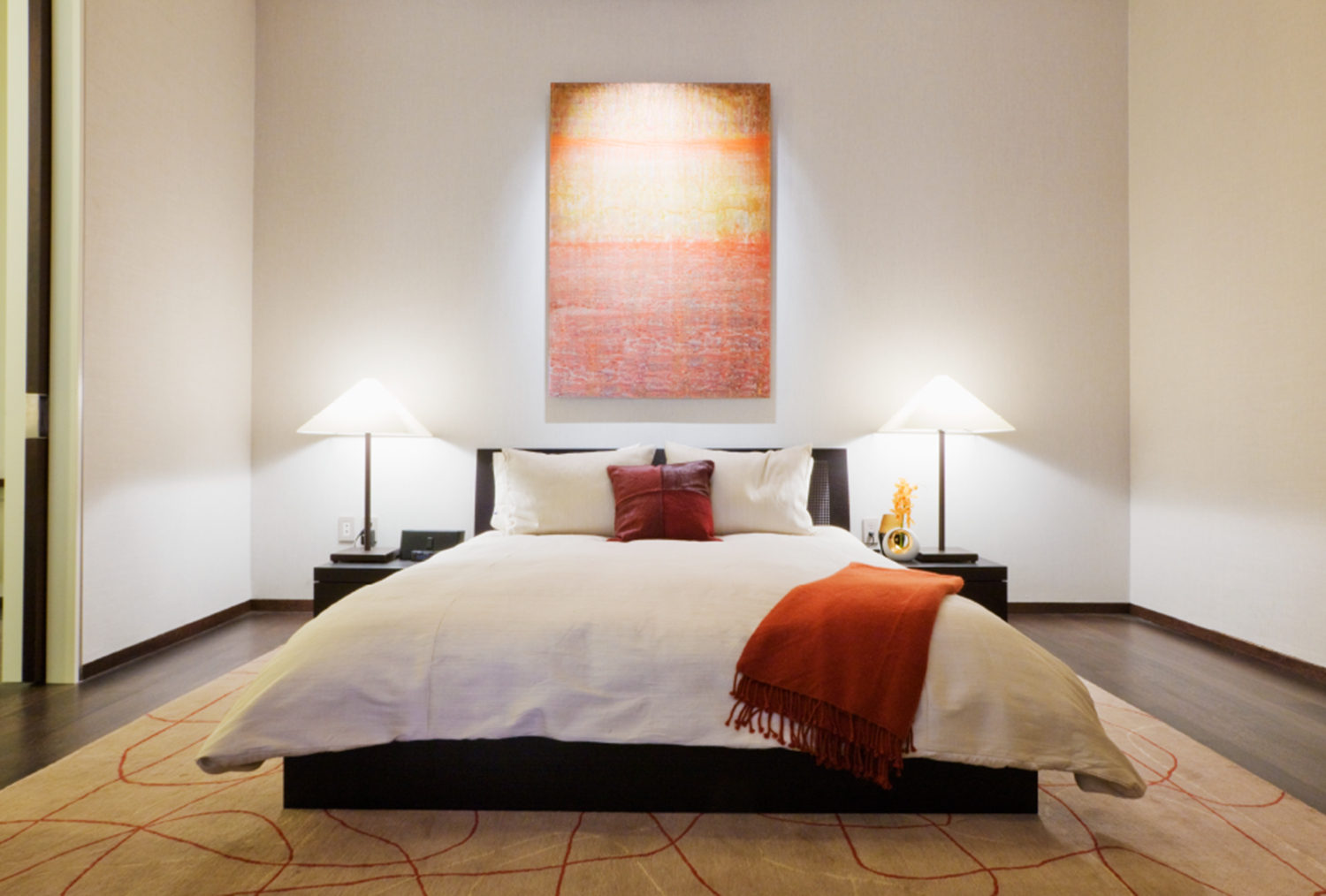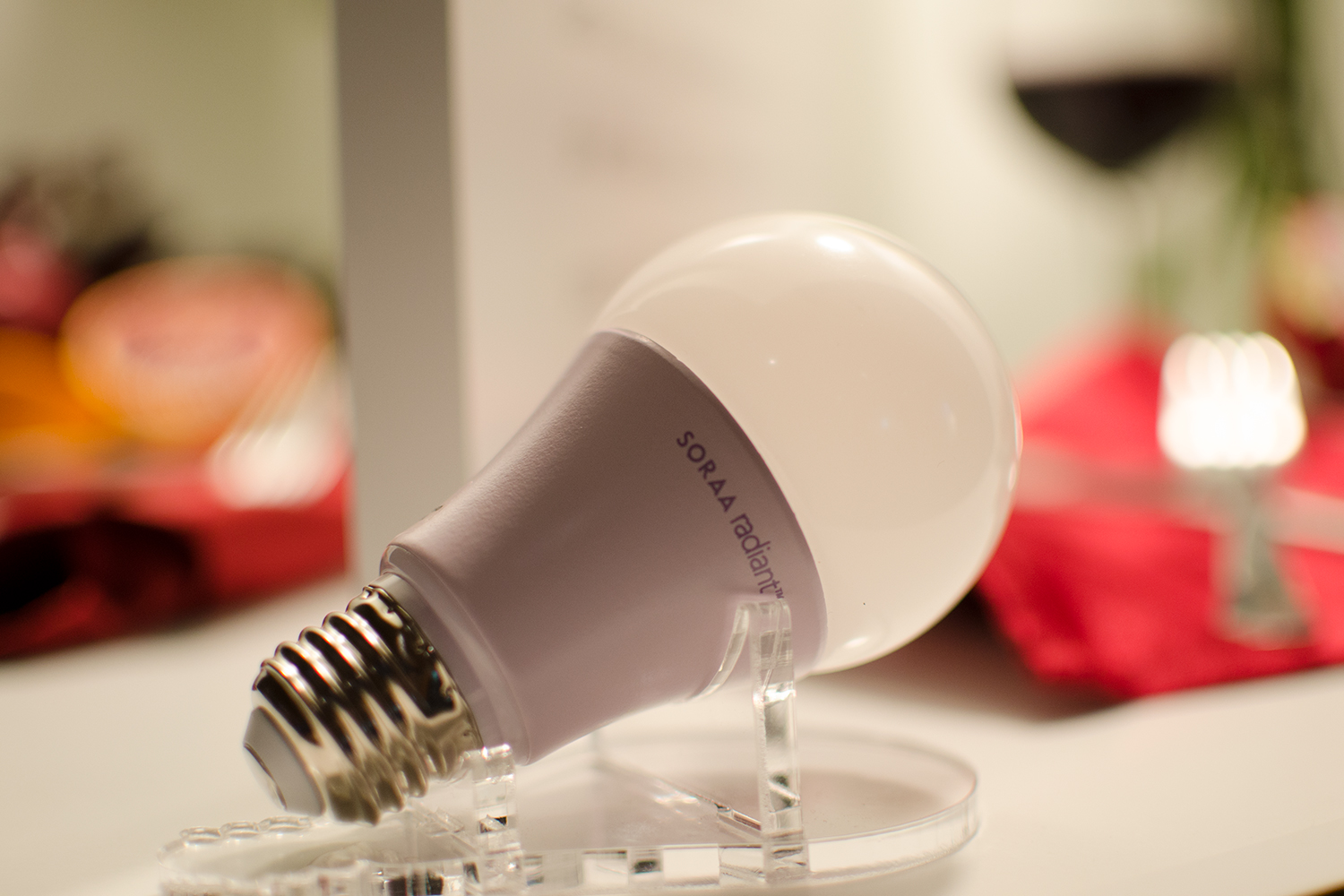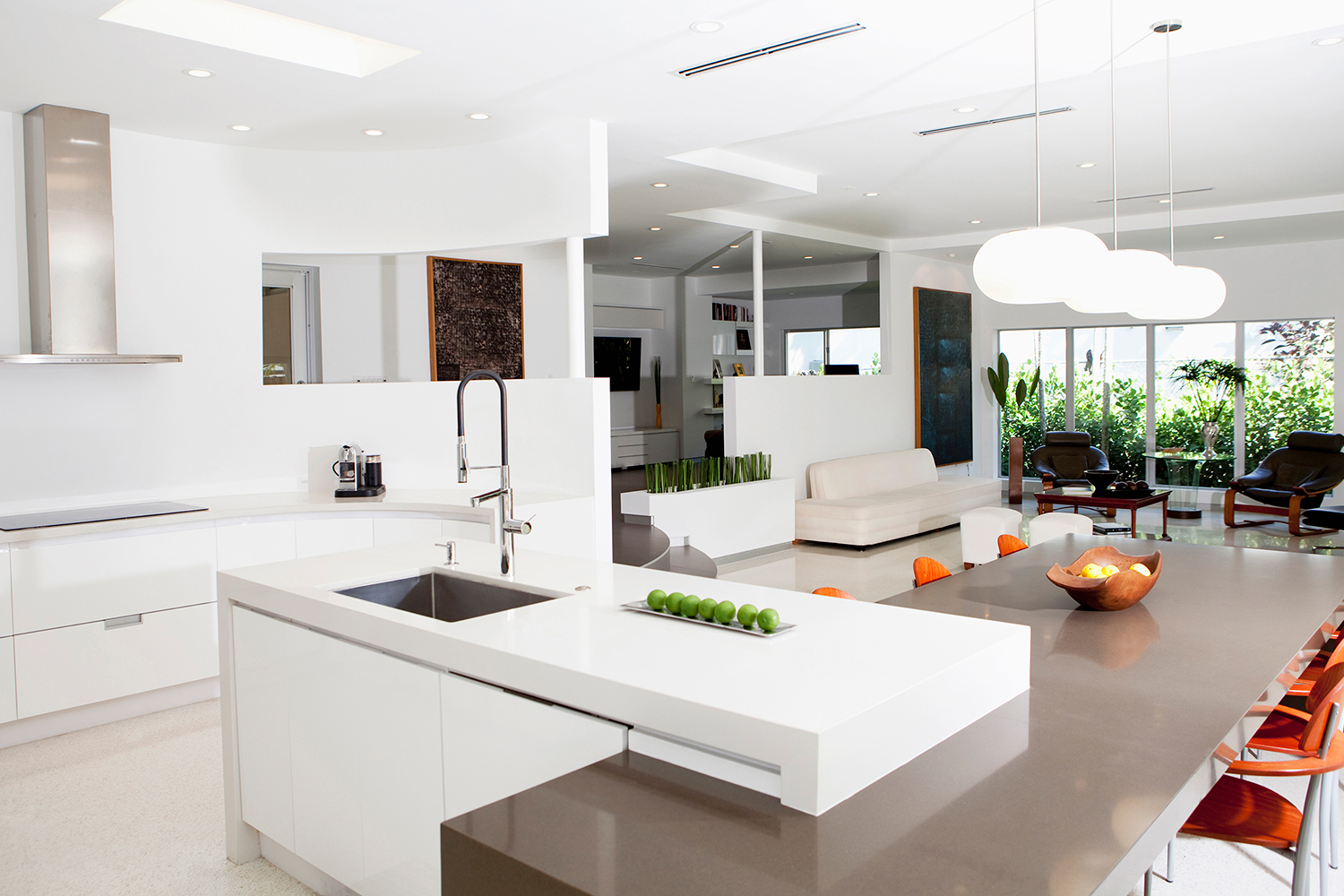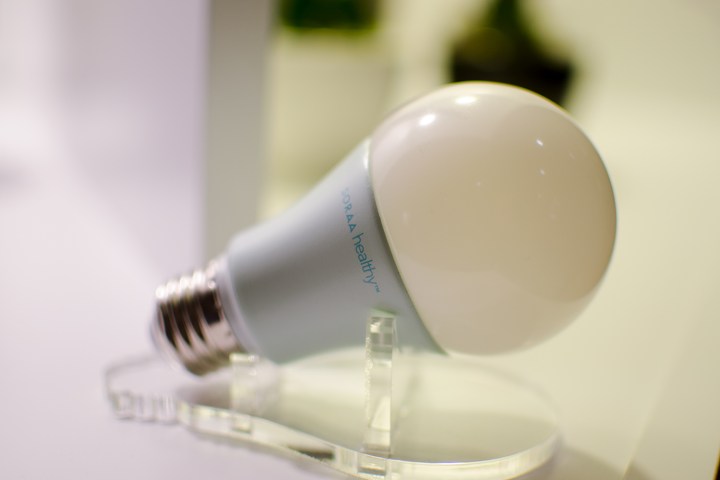
Traditional LEDs contain blue light that helps us feel energized in the morning, but the same color is detrimental to our health closer to bedtime. Too much exposure to blue light at night reduces your body’s production of melatonin, a hormone that helps you fall asleep. This can cause sleep issues, which then put you at risk to other health problems including obesity, heart attacks, and more. It’s why tech companies have introduced features that let you suppress blue light after sunset, like Apple’s Night Shift or the Philips Hue White Ambiance.
But while electronics and smart bulbs can suppress blue light, Soraa Senior Vice President of Marketing Todd Antes told Digital Trends the color is often still present, or the light’s hue is extremely yellow. Even worse, not everyone can afford to fill their home with smart bulbs (a starter kit from Philips for four bulbs costs $150). Soraa’s Healthy bulb tackles all three of these problems thanks to the color violet.
After creating the blue LED in the 1990s — and receiving a Nobel Prize for it — Shuji Nakamura founded Soraa in 2008 to create a violet LED. The company was successful, and the violet LED allowed Soraa to produce bulbs offering the “full spectrum” of colors, mimicking an incredibly natural white light. Soraa began selling its high-end lights to places where accurate color representation matters: Historical venues like the Palace of Versailles and museums all over the world.
Now, costs have gone down and Soraa is entering the consumer market. Its new Healthy LED bulbs cost just $19 each, and they do not have any blue light. Instead, the bulb utilizes the violet LED to mimic blue light and offer a hue that is close to natural light, without being too yellow. The lack of the blue LED means your body will produce melatonin at night, allowing you to fall asleep easier. Soraa said these bulbs should be installed in rooms where you spend the most amount of time at night, like the bedroom or the study.
The company began selling another light bulb called Radiant late in 2017 and it is the bulb you want to install in places where you want the room to look natural. Radiant does have blue light in it, but it also has the violet LED, meaning it can show off the full color spectrum. We saw a demo with two fruits baskets — one lit up with a traditional LED, and the other with Soraa’s Radiant LED. The fruits under Soraa’s bulb were much more colorful and vivid, whereas the standard LED made the fruits look lackluster. These Radiant bulbs go for $14 each.
Eventually, the company wants to miniaturize the technology enough so it can be embedded into our smartphones and other electronics. That means in the future, when Night Shift kicks in, your iPhone’s screen won’t be an uncomfortable orange hue; it will look natural, while still suppressing blue light.
Neither of Soraa’s new bulbs has any smart functionality; you can’t turn them on with Amazon’s Alexa or Google Assistant. At CES 2017, the company showed off a consumer-grade bulb called Helia that can be voice controlled and can change its color — add more blue in the morning or suppress it at night — based on the time of day and lighting in the room. Helia was delayed and it has now been rebranded to Soraa Sky. It will be released in the coming months.
T.J. Grewal, Soraa’s chief product officer, told Digital Trends the company decided to focus on traditional lights first because it wanted people to understand the importance of good lighting, as well as why blue light is detrimental at night. Keeping it at a low cost also makes it more accessible. The upcoming Soraa Sky combines the best of both the Radiant and Healthy bulbs and adds a lot of smart functionality — but it will have a higher price tag.
You can nab Radiant or Healthy bulbs now from Amazon or directly from Soraa.
